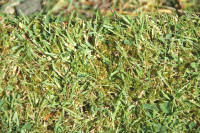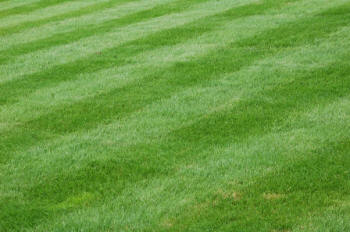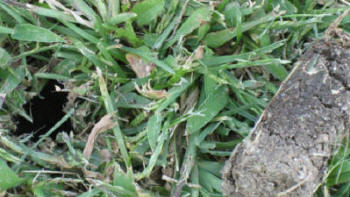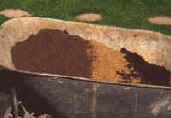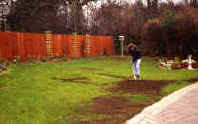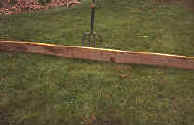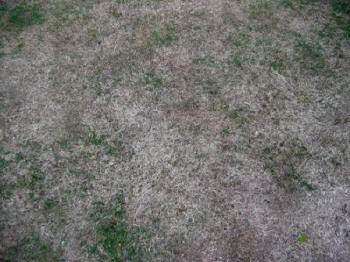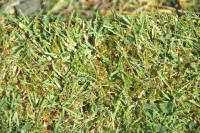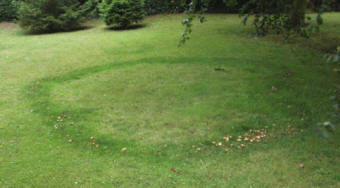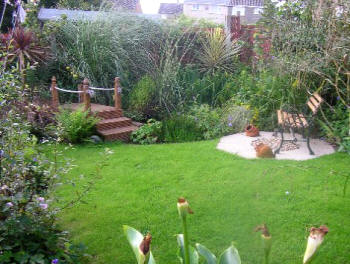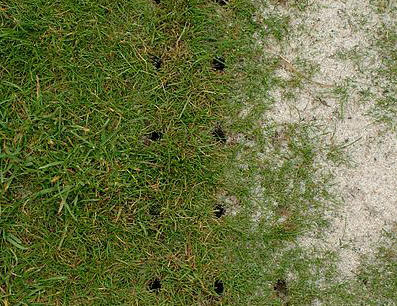Moss in Lawns is probably one of the least understood of all grass lawn problems. Treating or killing the moss is not the answer. Moss is a sign
that something is basically wrong with your lawn. Too often, gardeners attempt to kill moss in lawns without tackling the problem that actually causes it. They are helped to this decision by the huge range of 'moss
killers' and Lawn Moss Treatment available at local garden centres. Moss in Lawns is one of the largest lawn problems.
There are two basic lawn moss killers for lawns that are available - Ferrous Sulphate and Dichlorophen. One or the other is usually incorporated into typical lawns Feed and Lawn Moss killer combinations.
- Waterlogging - in winter or summer.
- Poor feeding regime - usually denoted by light green grass.
- Acid soil - carry out a test.
- Shaded Lawns - overhanging trees or large shrubs.
- Mowing lawns too close - a common cause, for it weakens the grass - allowing moss to take hold
- Drought - if severe enough to harm or kill the grass. Not to be confused with a bit of summer-browning
- Sandy - free-draining soils. This can weaken the grass and allow moss to take over. Some mosses are quite happy in these conditions.
- Compaction - continued use by children and pets with no remedial attention by way of aeration in the Autumn.
Simply using Lawn Moss Killer, will only kill off the current growth. You
should aim at dealing with the basic problem.
Generally, lawns that are well maintained - which includes
being well fed, cut properly, aerated and not allowed to develop thatch
- then the problems which result in moss will not occur in the first
place. Moss can rarely compete with strong growing grass in lawns. It is
allowed to develop andtake a hold when the grass growth is weak. Get
the grass growing properly and the likelihood is that your lawn will not
suffer from moss problems.
Treating small areas of lawn moss can be carried out with a lawn moss
treatment or lawn moss killer containing Dichlorophen. After a couple of
weeks, you can rake out the dead moss and re-seed. If you need to use a feed
for the area, it is better to feed the whole lawn in order to avoid
patchiness!
Assuming that you have inherited a lawn with a moss problem, you should
carry out the following maintenance regime - rather than simply treating the
moss which is there. (The details of all operations are to be found
elsewhere in this section. Quick fixes just do not work, other than to kill
the moss which is present.) Unless you tackle the underlying problem, the
moss will return!
